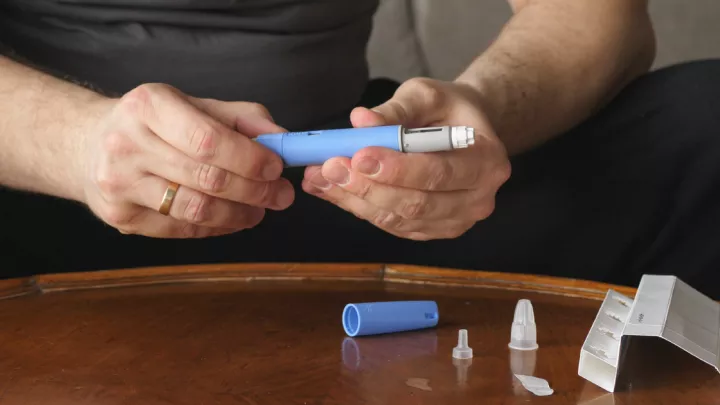What to do if you develop trigger finger

Trigger finger is one of the most common hand issues Nebraska Medicine orthopaedic surgeon and hand specialist Joseph Morgan, MD, sees in clinic.
“It’s an issue that is more common among people age 40 and older and typically gets worse with time if it is not treated,” Dr. Morgan says.
Trigger finger is associated with catching or locking of a finger or thumb when it is in full or near full flexion. Trigger finger refers to the catching or snap sensation or sound a person feels. You may experience tenderness in the palm of the hand past the last crease, especially when grasping or squeezing objects.
Trigger finger occurs when the protective sheath surrounding the flexor tendon (which helps hold the tendon to the bone) becomes too tight, irritated and swollen. This causes a nodule to form, making it difficult for the tendon to glide smoothly. In some cases, the finger may become locked.
Common symptoms include:
- Pain and tenderness at the base or palm of the affected finger
- Pain with grasping or squeezing objects
- Clicking or catching sensation when flexing the finger
- Finger stiffness, especially in the morning
- Locking of the finger in a bent position
Risk factors
In more than 50% of cases, there is no known cause for trigger finger. People at highest risk for trigger finger include those with a condition that causes swelling in the fingers. This may include those with:
- Diabetes
- Hypothyroidism
- Arthritis
- Injury to the finger
- Jobs that require repetitive gripping or grasping
Once you have trigger finger, you are at greater risk for developing it in other fingers, notes Dr. Morgan. It can involve multiple fingers and fingers in both hands. “I have seen patients with trigger finger in all four fingers and thumb and even someone with all fingers involved in both hands,” he says.
When symptoms are mild, the pain may come and go but will usually get worse with time. You can try home remedies like ice and ibuprofen, but most patients have no luck resolving the condition on their own, notes Dr. Morgan.
“If you have pain that lasts more than a few weeks, you should get evaluated,” recommends Dr. Morgan. “The sooner you seek treatment, the more likely we will be able to treat your condition with conservative medical therapy.”
Trigger finger treatment
The majority of cases can be treated with a steroid shot that is injected at the base of the affected finger.
“Up to 90% of patients get immediate relief by the next day or within a week,” says Dr. Morgan. “If pain continues or returns after six weeks or more, we can administer another shot.”
Treatment is most successful when trigger finger is treated early on, pain is mild and there is occasional clicking. “If you wait until your condition is more advanced and your finger is locking, there is a greater chance you will need surgery to treat the problem,” says Dr. Morgan.
Even surgery is a fairly simple procedure that can be performed in clinic. A local anesthetic is applied to the palm. Then, a small incision is made at the base of the finger. The sheath is cut, and the area is closed with a couple of stitches.
The surgical procedure is quick and convenient. No fasting is required. There are no restrictions after surgery and patients can return to normal activities immediately, notes Dr. Morgan.
“In nearly all cases, this procedure is curative,” Dr. Morgan says. “In rare cases, the area may heal and become tight again years later. If this occurs, a steroid shot or revision surgery will typically restore normal function again.”
“If you experience any of the symptoms discussed above, don’t wait too long to get evaluated,” says Dr. Morgan. “There’s no need to suffer, and the sooner you seek treatment, the more treatable your condition will be with conservative means.”
Call 800.922.0000 to schedule an appointment with one of our hand specialists.







